Tom's Guide Verdict
By combining a router, security appliance and local software, F-Secure's Sense can add extra protective layers for your home network, but the router has limited customization potential and lags on performance. Still, for an apartment or small home, it's $200 price can't be beat.
Pros
- +
Inexpensive
- +
Includes year of malware software
- +
Two-year warranty
- +
Display doubles as a clock
Cons
- -
Mediocre Wi-Fi performance
- -
Little customization potential
Why you can trust Tom's Guide
F-Secure's $200 Sense combines a router with a security appliance bringing together solid home Wi-Fi with several layers of protection. It may lack parental controls, a guest LAN and Wi-Fi Protected Setup, but F-Secure's $200 Sense security router includes a year's worth of malware software, an attractive clock and has more than enough WI-Fi range and throughput for most homes. Is Sense's extra layer of protection enough to defend a home network – including home automation devices – from attack by adding cloud-based protection to traditional scanning?
Design
F-Secure's Sense breaks the mold of security appliances with a tall and trapezoidal tower design. It's huge compared with the Bitdefender Box, but is less radical than Norton's geodesic Core. Sense measures 8.5x 4.9 x 3.4 inches, and its white with gray trim is demure.
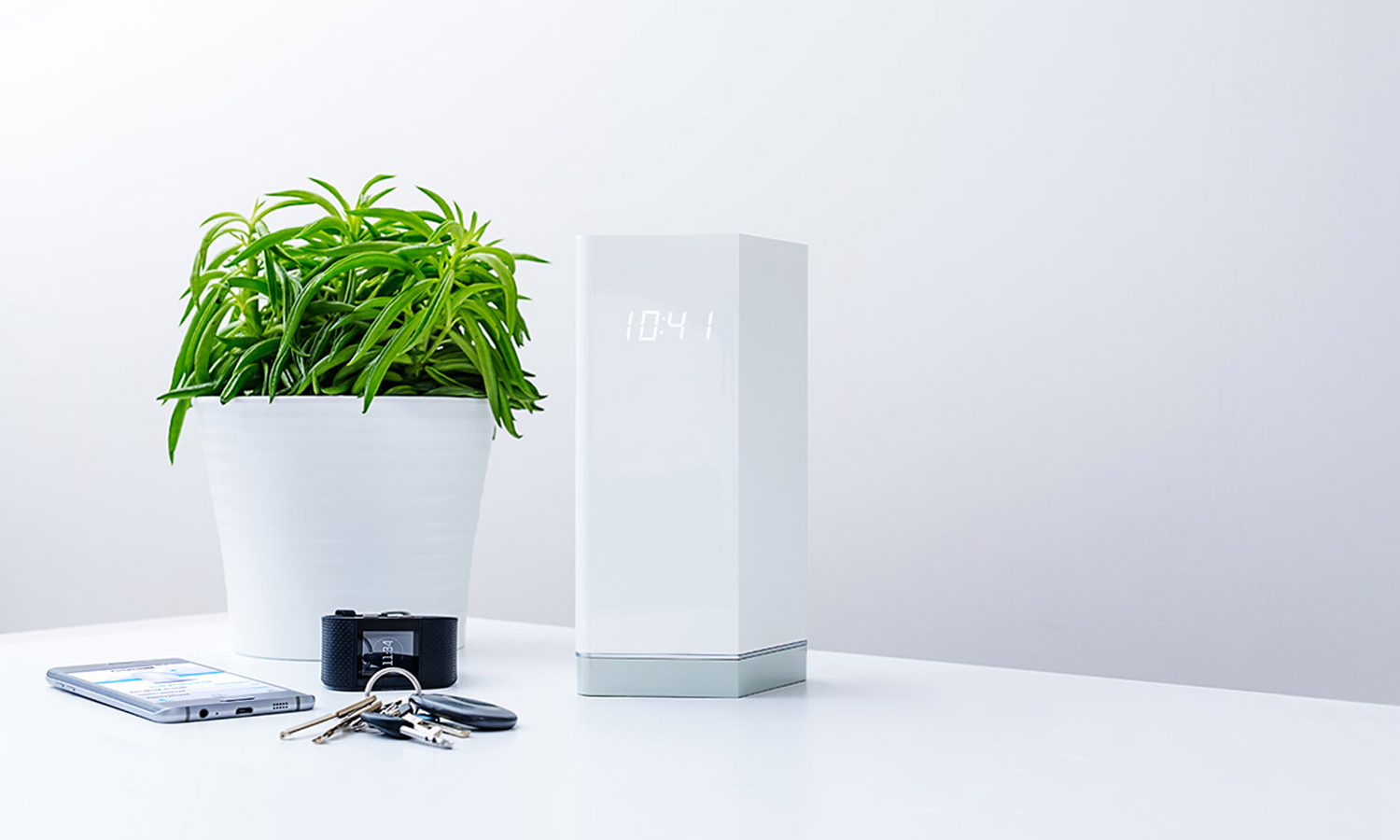
Able to sit on a table or shelf, it can't readily be wall-mounted. It can easily be set up next to your broadband modem, router or out in the open, where it's a natural conversation starter.
Be aware that a new Box design will soon be out along with similar hardware from Norton, Cujo and Dojo. By the new year, the home-security appliance space should be crowded with competitors, each with a different take on network protection.
Sense runs on open-source Linux software, has a 1GHz dual-core processor along with 512MB of RAM and 1GB of solid-state storage for firmware and settings. In the back, you'll find four Gigabit Ethernet ports – one for the WAN link and three for wired devices – along with a USB 3.0 port. At the moment, the USB port can only be used to power a device and not for connecting a hard drive or printer. The router's proprietary AC adapter plugs in at the bottom, next to a blue activation button and a recessed reset switch.
Sense has an LED display that creates different patterns while being installed and is a clock when everything is set up, unlike the Box, which emits an unearthly bluish-green glow.. On the downside, it doesn't provide network stats, unlike routers such as Amplifi HD.
AV Protection
Rather than inspecting every packet that enters and leaves your home network, Sense provides overlapping levels of protection.
Get instant access to breaking news, the hottest reviews, great deals and helpful tips.
To start, the Sense device is connected to F-Secure's cloud-based protection service that monitors every web journey and blocks any known malware site before any harm is done. For instance, if you try to open a site that has a reputation for spreading malware, Sense will stop you. Too intrusive? Any site can be whitelisted.
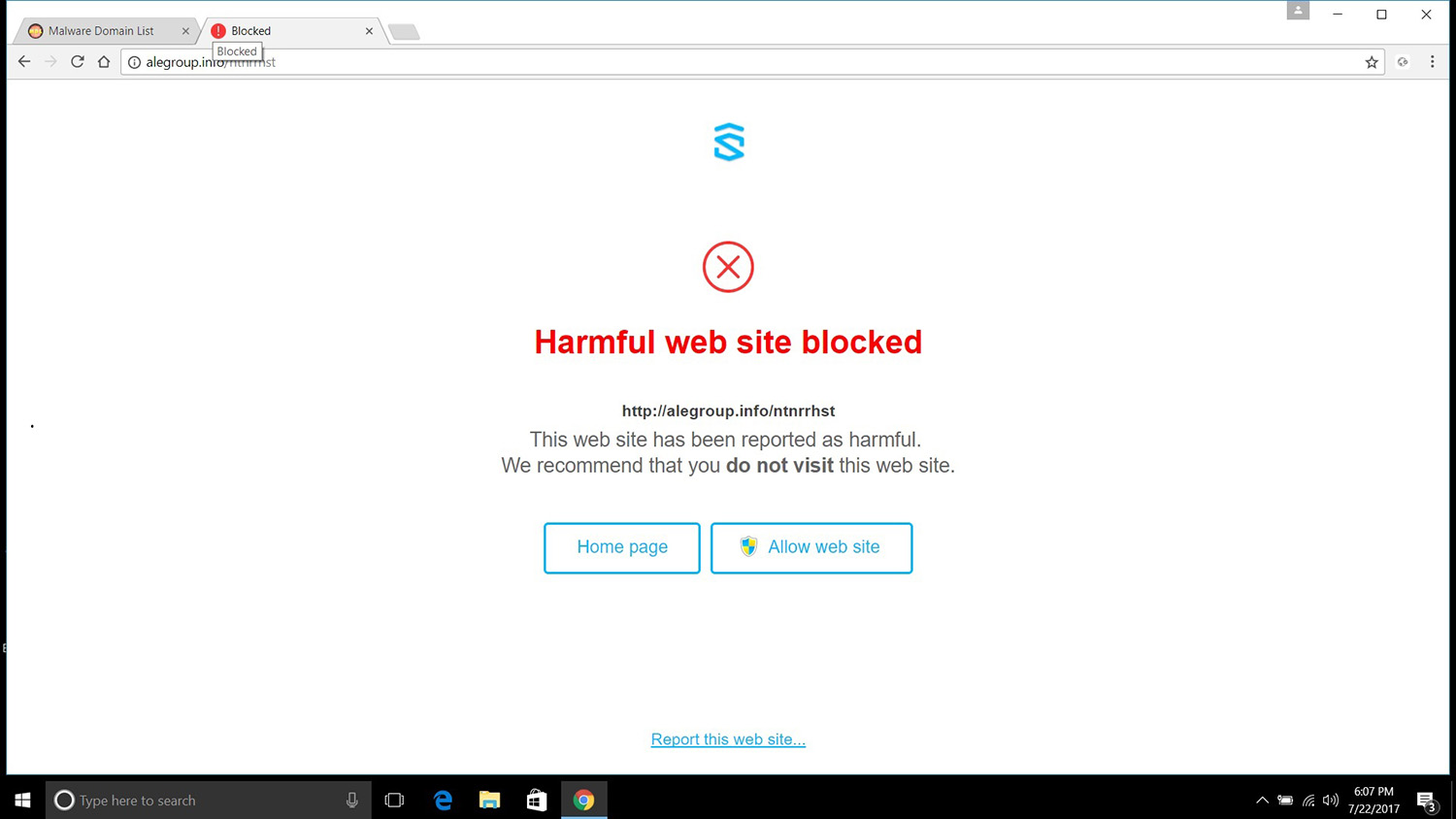
Sense comes with an annual license for 25 installations of Sense software that adds another layer of protection. At face value, it can't compare with Bitdefender's unlimited software license, but if you need more, contact F-Secure's technical support personnel, and they will extend it for free to accommodate any large digital family. Once the year is up, it costs $9.90 per month.
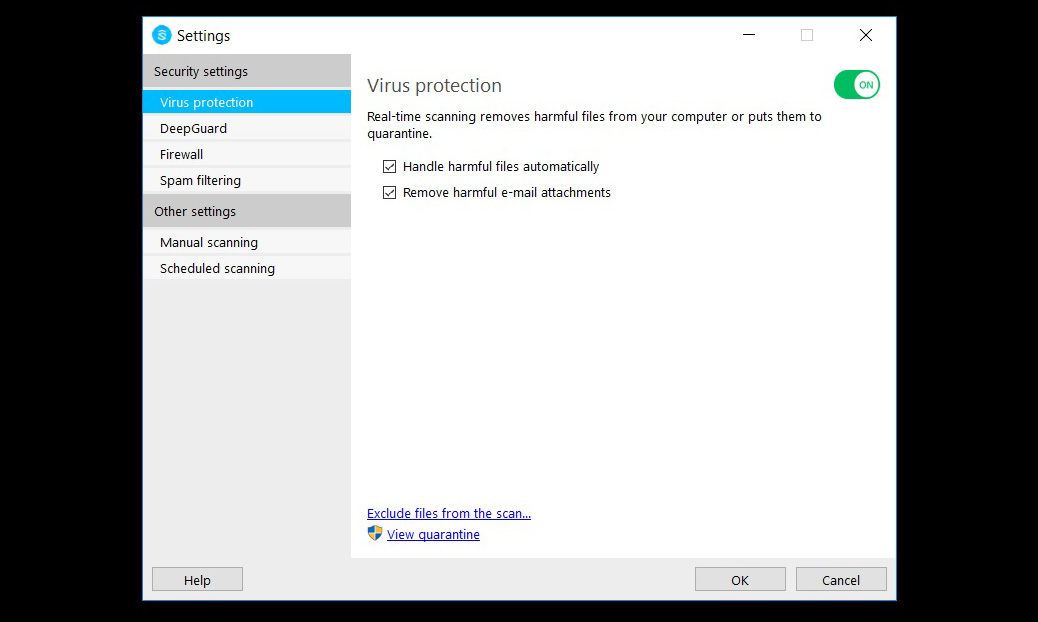
Similar in scope to F-Secure's Safe software, there's a lot of variation based on platform, though.
- The PC and Mac software can scan for viruses and include a firewall, but can't configure Sense's settings.
- The iOS Sense app can't scan for malware but can configure the system.
- The most complete setup is the Android app that lets you scan for local threats and configure Sense.
Protection
F-Secure Sense software relies on the same scanning engine and web protection that other F-Secure apps use. It provides excellent protection, but suffers from annoying false positives.

On AV-Test's July-August survey of Windows 7 vulnerabilities and May-June's examination of Windows 10 attacks, F-Secure's app had perfect 100 percent or nearly perfect 99 percent scores on detecting and eradicating Zero Day and widespread malware. The price for this was a total of 17 false positives over the two test periods.
The results of AV Comparatives' September report showed that F-Secure's software detected and neutralized everything that the firm threw at it with a perfect 100 percent score. On the other hand, it led the competition in a bad way: 42 false positives, three times the level of Microsoft's Defender.
Finally, I tried out Sense's ability to block dangerous sites by trying to connect with the top 10 sites on the Malware Domain List (www.malwaredomainlist.com) on PC with Safe software that was connected to the Sense-controlled network. The software-hardware's one-two punch blocked all attempts and flashed a warning screen. You can whitelist any site with a single click.
Performance
A hybrid router and security appliance, Sense is built around a Realtek Wi-Fi chip that can set up a MIMO-based 802.11ac network with four internal antennas. It's rated at a peak throughput of AC 1750, but unlike many of the newer routers, it requires a separate network name and password for its 2.4- and 5GHz networks.
In our Utah test facility using Ixia's ixChariot, Sense was a good router capable of filling a mid-size house with wireless data. Able to deliver peak performance of 514.8Mbps at 5 feet, it is in a virtual tie with the Portal WiFi router at 553.4Mbps. Both were beaten by the first- generation Eero's ability to move 573.7Mbps at the same distance.
This falls off quickly to throughput of 285.6Mbps at 100 feet, versus Portal's 384.1Mbps. At 150 feet, Sense provided 276.7Mbps of throughput.
It's good at punching a strong Wi-Fi signal through walls and ceilings, which just might help in filling an older home with data. On the other side of our test metal-and-soundboard walls, the Sense's signal was carrying 503.6 and 516.8Mbps, compared with Portal's 441.2 and 434.9Mbps.
As a router, Sense fell short of the mark at my 3,500-square-foot home, with many places left unconnected. It had a range of 65 feet that left about one-third of the house disconnected. Unfortunately, F-Secure doesn't sell mesh extensions for its Sense router.
The Sense sets up a MIMO-based network that can support several devices at once. It passed my informal saturation test where a Macbook Air plays an Internet radio station while an iPad Pro and Surface Pro 3 display videos and a Samsung Tab Pro S moves files onto and off a networked storage system. All the audio and video sounded and looked artifact-free.
Security and Privacy
Sense goes beyond traditional routers to protect your digital home. In addition to guarding against the most popular online attacks, the Sense PC software can thwart bots and includes a firewall.

The PC software includes the ability to block sites based on reputation and has browser extensions for Chrome, IE and Firefox. Plus, the next time you want to check your bank balance or shop online, the program's protection forces the use of an encrypted HTTPS connection and prevents someone from intercepting the data flow.
Most networks leave home-automation devices in the emerging world of the Internet of Things wide open to attack. Sense protects by checking the Server Name Indication (SNI) field of encrypted data packets and does a reputation check on the site before initiating any contact. This allows it to block potentially bad connections, like a site that has been known to take over webcams or thermostats.
On the other hand, Sense lacks things we expect from modern routers, like the ability to set up quality of service priorities and have a guest LAN for visitors. You can't use static IP addresses or quickly connect with new clients using Wi-Fi Protected Setup (WPS). F-Secure is working on several updates, including the above features.
As a router, its security is up to date with WPA2 encryption. All Sense hardware updates are encrypted, providing an extra level of security.
Interface
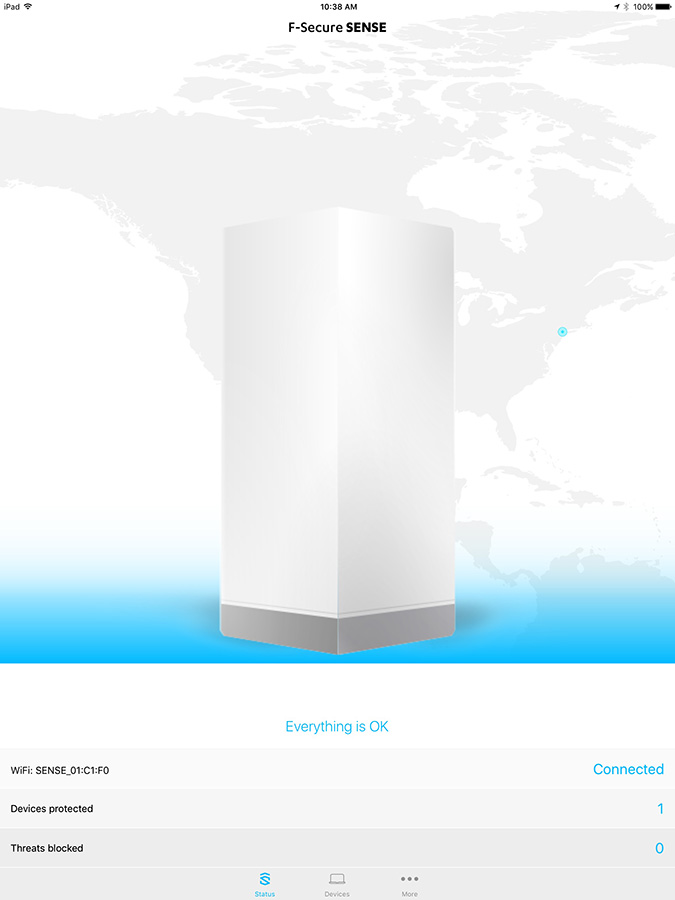
Overall, the Sense software is bright, open and easy to work with, but as is the case with many networking apps, the iOS and Android versions only run in portrait mode. The main Status screen shows an illustration of the Sense system along with a map of the U.S., Canada and South America and a vibrating blue dot to show your location.
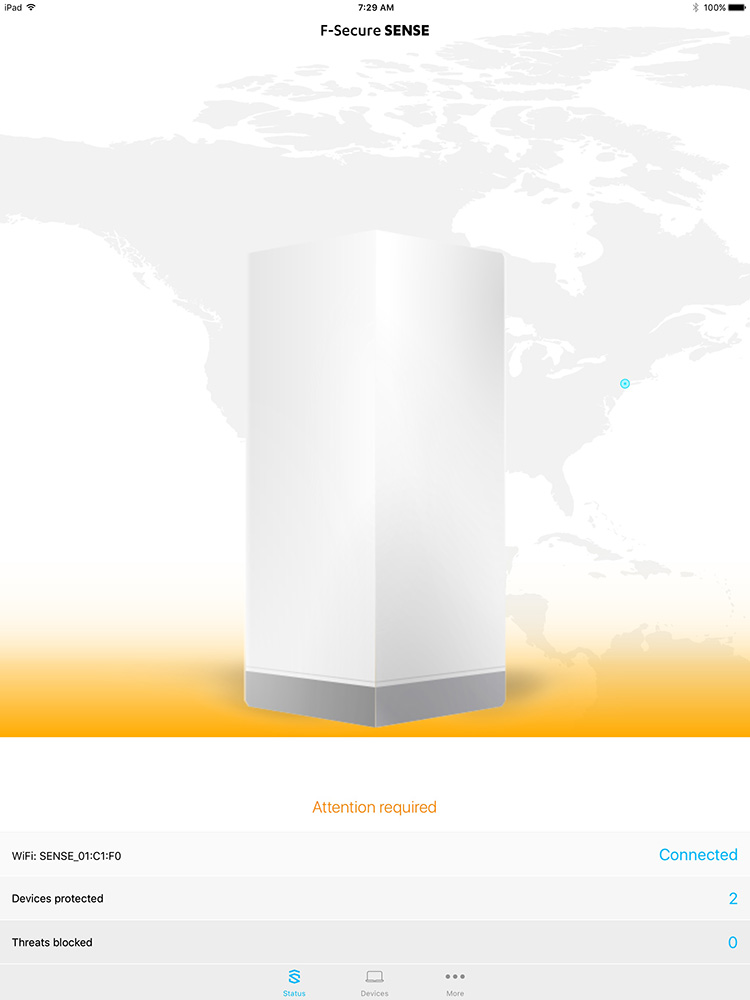
Beneath is a notation that "Everything is OK" in green or "Attention Required" in yellow. The screen shows the network's name, number of devices online and how many threats Sense blocked as well as providing links to Devices for a list of connected clients. Click on any to see details like IP and Mac addresses or block the internet for this device; unfortunately, you can't turn off the internet for all devices at once for family time, dinner or movie night.

The More link leads to the Settings category, but it doesn't allow much in the way of adjustments. In addition to turning tracking and browsing protection on or off, you can enter whitelisted sites and set up port forwarding. There're also subsections for hardware and network, but they have the basics, like DHCP lease length and the ability to dim or turn off Sense's clock display.

There's also an event log that lists threats and updates as well as a Help section. Here you can see when your subscription expires, and send Feedback to F-Secure.

By contrast, the PC interface has the potential to adjust the firewall, spam filter or its Deep Guard protection. There's a Game mode and a place that shows how many sites Sense has blocked. You can start a manual scan or schedule one, but can't make any changes to the Sense's settings.
Installation and Support
It took 11-minutes to get the F-Secure's Sense installed and protecting my network, compared to the Box's arduous 40 minutes. You can plug Sense into a modem or router, run it over Wi-Fi or with a network cable anywhere in the house. This provides the ability to put it where you want it or where you might want a clock.
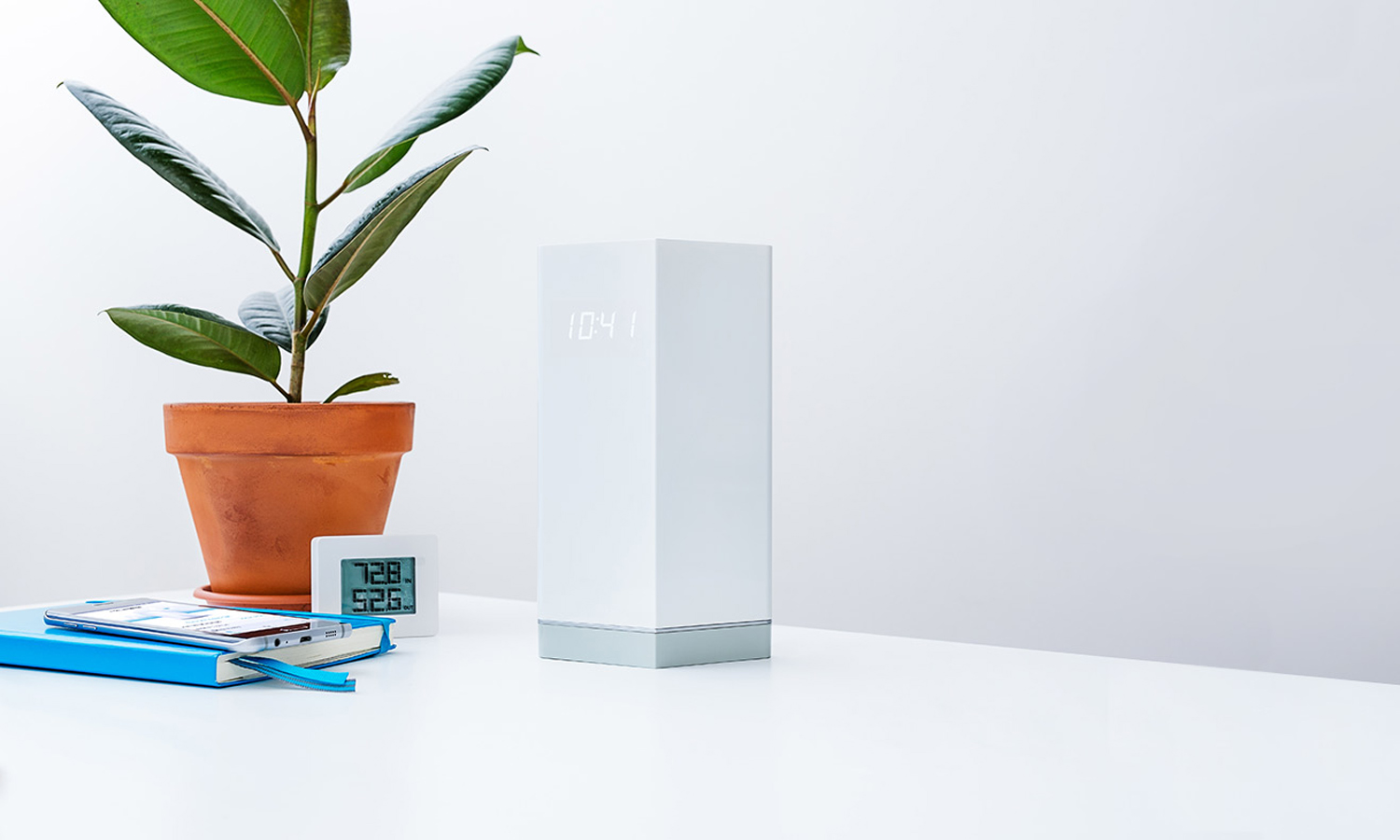
The installation process starts with plugging its AC adapter in and connecting it to your router or broadband modem. Next up, install the Android or iOS app; sadly, there's nothing for Macs or PCs to configure the Sense hardware.
Once the app is running, click "Create Sense Network" and the software goes to work. At this point, you can opt out of having local data about usage sent to F-Secure.
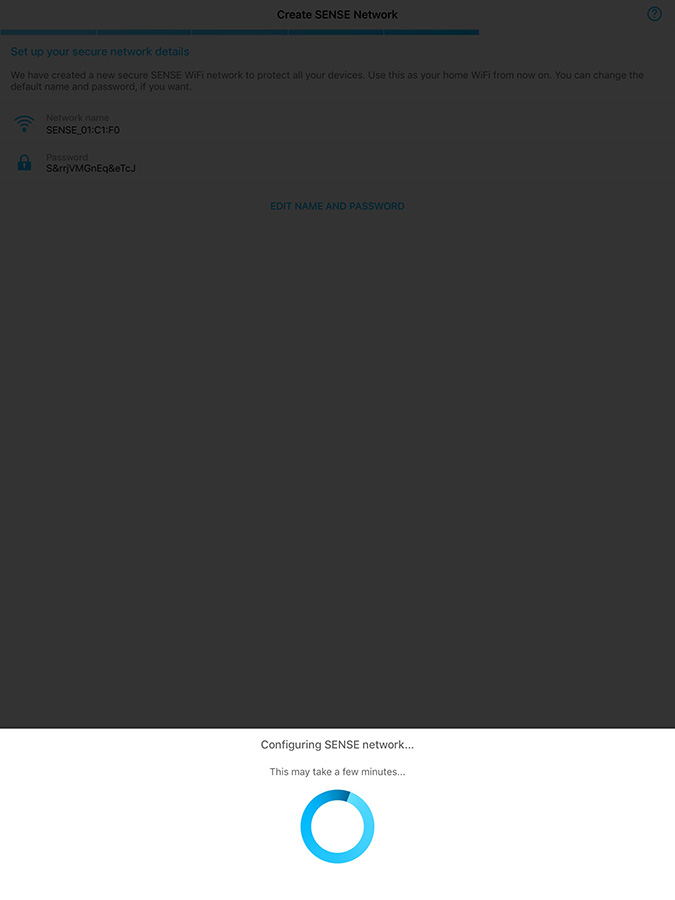
After you press the small blue activation button in the system's back, a four-digit number comes up on the Sense's display. Enter it in the app and Sense pairs with the device's Bluetooth radio. At this point, the software creates a new network name and password that you can edit.
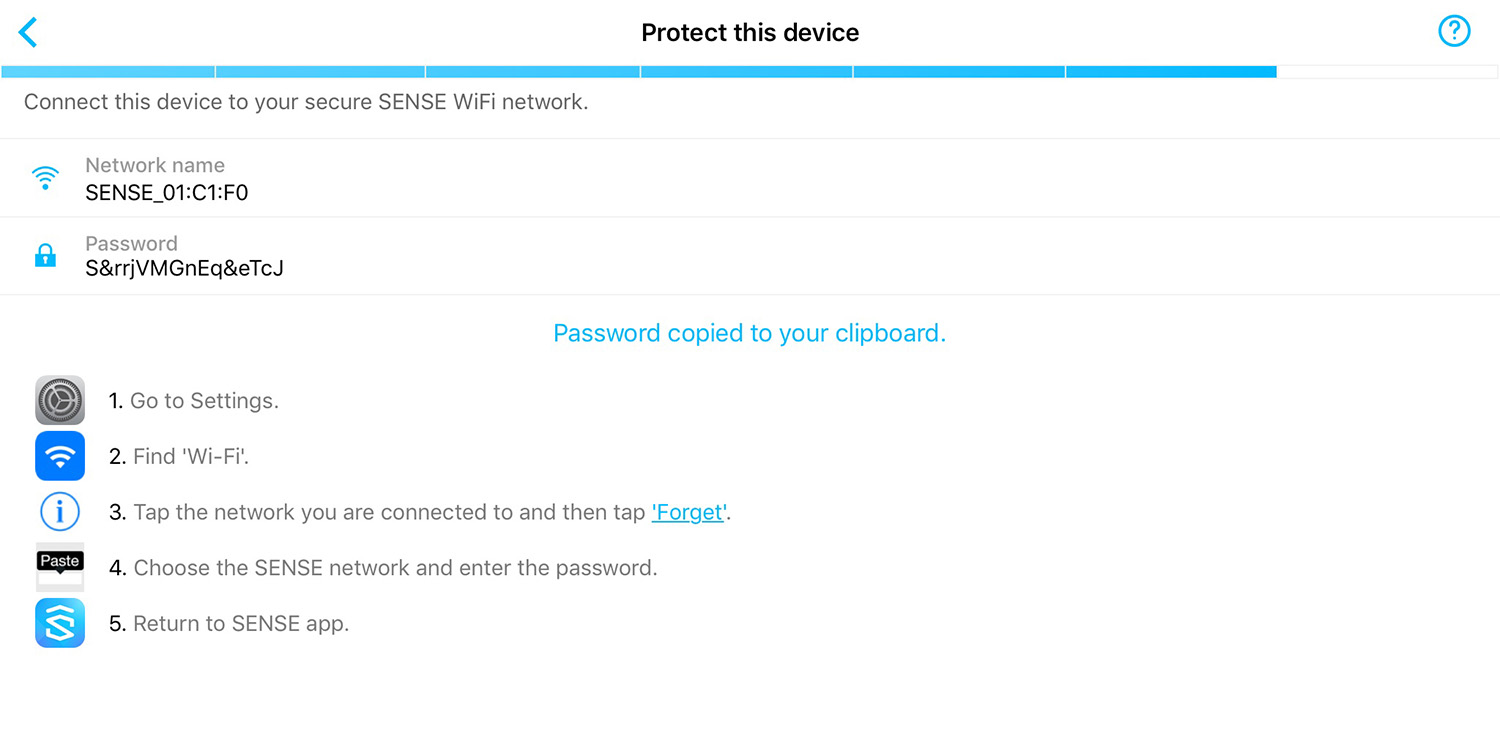
The process is sped up with the clever trick of putting the new password in the system's clipboard, making it easy to enter. As the device connects, the display goes from showing rotating squares to a large plus symbol. When everything's done, the device synchronizes with a time server and displays a digital clock.
With a network containing eight devices, Sense found everything, including a home-automation WeMo AC switch. It also detects and provides details about their connection. On the downside, while the app warns you that connected devices don't have the Sense app, it only shows how to install it after two clicks. After that, you'll need to go to http://sense.router, a process that could easily have been automated.
F-Secure provides 24/ 7 phone and email support for Sense. On the product's site, there are a slew of FAQs as well as email and phone interactions with their technicians to solve problems. Happily, unlike the Box's one-year warranty, F-Secure stands by Sense hardware for two years.
Bottom Line
F-Secure's $200 Sense router is like a Swiss Army knife for your home that protects against malware attack. Its Wi-Fi signal should be more than enough for most homes, and there isn't much to customize, but Sense's midrange performance is on a par with Portal WiFi, while enhancing network security, like Norton's Core.
Credit: F-Secure
Brian Nadel is a freelance writer and editor who specializes in technology reporting and reviewing. He works out of the suburban New York City area and has covered topics from nuclear power plants and Wi-Fi routers to cars and tablets. The former editor-in-chief of Mobile Computing and Communications, Nadel is the recipient of the TransPacific Writing Award.
-
boggsprojects "Mediocre Wi-Fi connection" For a router? That's hardly worthy of any rating above a 6. It's a router. "You have one job..."Reply

